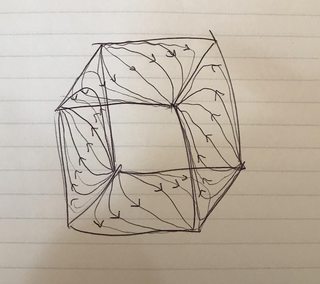Automorphisms and zeta space
Here I will operate under the assumption that $\phi_s$ is a unique and well-posed solution to the following PDE. This means whatever conditions are needed for that to occur, will be imposed.
$$s\frac{\partial^2}{\partial s^2}\phi_s(x)=\mp x\frac{\partial}{\partial x}\phi_s(x) $$
for which we have our pre-assigned unique solution:
$$\mathcal \phi_{s}:=\bigg\lbrace e^{\frac{\pm s}{\log x}}:s \in \Bbb R \bigg\rbrace$$
We have singularities at $s=0$ and $x=0,1$ and this will be called a "cross singularity" or $CS$. A natural idea would be to intialize some distribution on this $CS$ and run time forward giving a wellposed analytic solution for all time. So we choose our pre-assigned solution $\phi_s$ and run the solution back in time where we obtain what we wanted, at least qualitatively.
We can throw out our solution for $s<0$ because it doesn't directly apply to the situation, and it does not rapidly decay. Meanwhile, for $s>0$ it is Schwartz i.e. has a rapid decay criterion, and we know its Mellin transform exists and has a closed Bessel form. This will be employed to extract a *1-parameter family* of functional equations for the Riemann zeta function.
$$\Gamma(\phi,r,s)\cdot \zeta(s) = \Gamma(\hat{\phi},r,1-s)\cdot \zeta(1-s)$$
whereby moving $\zeta(s)$ to the RHS gives us a partial differential relation on the factor $\Gamma(\phi_s,r)$
$$r^2 \frac{\partial ^3}{\partial r^3}\Gamma(\phi_s,r) =s^2 \frac{\partial}{\partial s}\Gamma(\phi_s,r) $$
where we recognize that the Mellin transform of our Schwartz family, $\phi_s$ must obey a third order (shallow water wave) PDE. Here we explicitly calculate the factor which we can quickly verify as a solution.
$$\Gamma(\phi,r,s)=\int_{\mathbb R^\times \cap ~(0,1)} |x|^r~\phi_s(x)~{dx\over |x|}=2 \sqrt{\frac{s}{r}}K_1(2\sqrt{r s})$$
My motivation at least, stems from building a space, a so called zeta-space, or $\zeta$-space which somehow encodes all of what I wrote above and goes further, letting one express automorphisms of $\zeta$-space as leaving critical strips invariant under these automorphisms.
I will now transition to more visual diagrams in part because it's much easier to convey the point and because I am much less sure how to rigorously show the mathematics in this part of the post.
$\phi_s$ is now shown to be decorated on all the panels of the unit cube in $\Bbb R^3$. I left out two panels because it would get cluttered. Here $\phi_s$ are understood to be our $1$-parameter family of Schwartz functions (the solutions we did not discard from the original 2nd order PDE).
We can build sections within the cube by gluing bounded subsets of the $\phi_s$ solutions to the original 2nd order PDE and requiring (by definition of a section) that projections take us onto the leaves, $\phi_s$ on the base space. If we do this correctly, the sections should look like this:
Finally we symmetrize to get symmetrical $\zeta$-space:
This is not rigorously posed yet because I haven't figured out how to say it precisely, but if the 3 rubber band loops around the object allow the object to act like a Rubiks cube group we can get a permutation structure on zeta-space. Any Rubiks cube transformation leaves the boundary invariant i.e. leaves the Schwartz families unchanged corresponding to an invariant quantity of the automorphisms of zeta-space.




Comments
Post a Comment